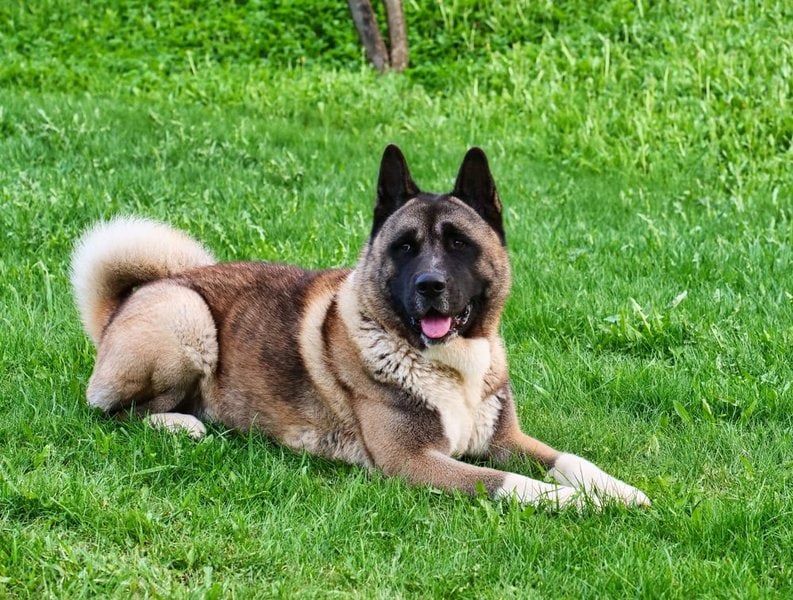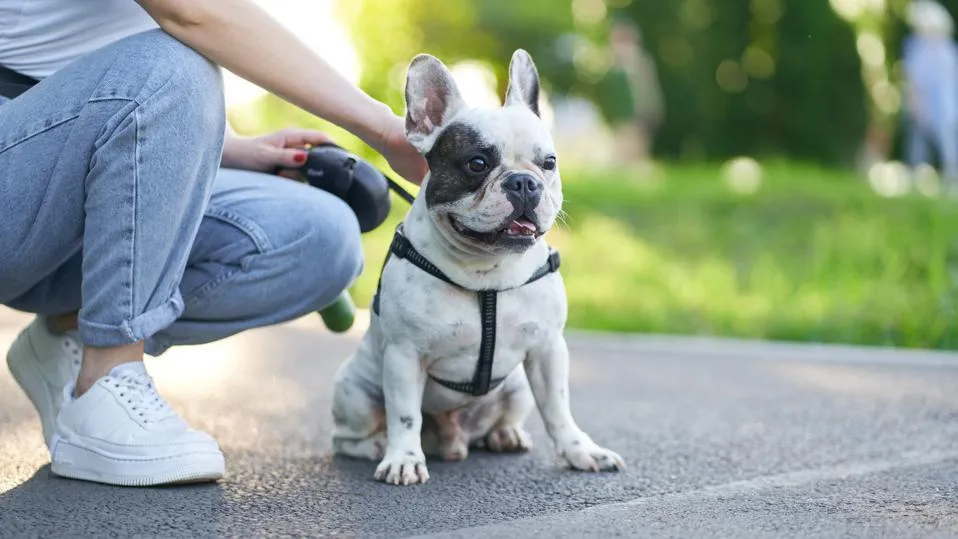The American Akita is a breed that commands attention with its powerful presence and unwavering loyalty.
These magnificent dogs have captured the hearts of many dog lovers worldwide, but they’re not for everyone.
In this comprehensive guide, we’ll delve into the fascinating world of American Akitas, exploring their history, characteristics, and what it takes to be a responsible owner of these noble guardians.
Let’s embark on this journey to discover why the American Akita might just be the perfect companion for you!
The Rich History of the American Akita
The story of the American Akita is one of resilience and adaptation.
Originally bred in Japan, these dogs have a lineage that dates back centuries.
The breed we know today as the American Akita actually diverged from its Japanese counterpart after World War II.
From Japan to America: A Tale of Two Akitas
In the 1600s, Akitas were prized possessions of the Japanese imperial family and samurai.
They were used for hunting large game like bears and boars.
However, their journey to America began in the 1930s when Helen Keller brought the first Akita to the United States.
During World War II, many Akitas in Japan were lost due to food shortages and being used for their fur.
After the war, American servicemen stationed in Japan fell in love with these dogs and brought them back to the States.
This led to the development of the American Akita, which is larger and more bear-like than its Japanese cousin.
Physical Characteristics: A Sight to Behold
American Akitas are truly impressive in their appearance.
They’re large, powerful dogs with a distinctive look that sets them apart from other breeds.
Size and Build
- Males typically stand 26-28 inches tall and weigh 100-130 pounds
- Females are slightly smaller, standing 24-26 inches and weighing 70-100 pounds
- They have a muscular, well-balanced body with a broad chest and strong legs
Coat and Colors
American Akitas boast a thick, double coat that comes in a variety of colors and patterns.
Common colors include:
- White
- Brindle
- Fawn
- Red
- Black
Their coat requires regular grooming, especially during shedding seasons.
I remember when I first got my Akita, Max – I was amazed at how much fur came off during brushing sessions!
Temperament: The Heart of a Loyal Guardian
The American Akita’s temperament is perhaps its most defining characteristic.
These dogs are known for their:
- Loyalty
- Courage
- Independence
- Protectiveness
They’re often described as “silent hunters” due to their quiet nature and keen awareness of their surroundings.
While they can be aloof with strangers, they form deep bonds with their family members.
A Personal Anecdote
I’ll never forget the day my Akita, Max, proved his protective instincts.
We were out for a walk when a stranger approached us aggressively.
Max, usually calm and quiet, immediately positioned himself between me and the stranger, letting out a low growl that made the man think twice.
It was a powerful reminder of the breed’s natural guarding abilities.
Training and Socialization: Key to a Well-Behaved Akita
Training an American Akita requires patience, consistency, and a firm but gentle hand.
These intelligent dogs can be stubborn at times, but with the right approach, they can become well-mannered companions.
Early Socialization is Crucial
Exposing your Akita puppy to various people, animals, and situations from an early age is essential.
This helps prevent aggression towards other dogs and excessive wariness of strangers.
Positive Reinforcement Works Best
Akitas respond well to positive reinforcement techniques. Harsh corrections can damage your relationship with these sensitive dogs.
Use treats, praise, and play to motivate your Akita during training sessions.
Health Considerations: Keeping Your Akita in Top Shape
Like all breeds, American Akitas are prone to certain health issues.
Being aware of these can help you provide the best care for your furry friend.
Common health concerns include:
- Hip dysplasia
- Progressive Retinal Atrophy (PRA)
- Hypothyroidism
- Bloat
Regular check-ups with a veterinarian and a balanced diet can help prevent or manage many of these conditions.
Remember, a healthy Akita is a happy Akita!
Exercise Needs: Keeping Your Akita Active and Engaged
Despite their large size, American Akitas don’t require excessive exercise.
However, they do need regular activity to stay healthy and mentally stimulated. Aim for:
- 30-60 minutes of daily exercise
- A mix of walks, playtime, and mental stimulation activities
Remember, Akitas have a strong prey drive, so always keep them on a leash in unsecured areas.
Grooming: Maintaining That Majestic Coat
The American Akita’s double coat requires regular maintenance to keep it looking its best.
Here’s what you need to know:
- Brush your Akita 2-3 times a week
- During shedding seasons (spring and fall), daily brushing may be necessary
- Bathe only when necessary to preserve natural oils in the coat
Is an American Akita Right for You?
Before bringing an American Akita into your home, consider the following:
- Do you have experience with large, independent breeds?
- Can you provide consistent training and socialization?
- Are you prepared for the grooming needs of a double-coated dog?
- Do you have a securely fenced yard?
- Are you comfortable with a dog that may be aloof with strangers?
If you answered yes to these questions, an American Akita might be the perfect companion for you.
Wrapping Up: The Majesty of the American Akita
The American Akita is a breed that embodies strength, loyalty, and dignity.
These noble guardians can make wonderful companions for the right owners.
With proper care, training, and socialization, an Akita can become a devoted family member and a true friend for life.
Remember, owning an American Akita is a significant responsibility.
But for those who are up to the challenge, the rewards of companionship with these majestic dogs are immeasurable.
So, are you ready to welcome an American Akita into your life?
If so, you’re in for an adventure filled with love, loyalty, and lots of fur!
Breed information
| Characteristic | Information |
|---|---|
| Name | American Akita |
| Origin | Japan (originally bred in Japan but recognized as a separate breed in the U.S.) |
| Group | Working Group |
| Size | Large |
| Height (Male) | 26-28 inches (66-71 cm) |
| Height (Female) | 24-26 inches (61-66 cm) |
| Weight (Male) | 100-130 lbs (45-59 kg) |
| Weight (Female) | 70-100 lbs (32-45 kg) |
| Lifespan | 10-15 years |
| Coat | Double-layered; outer coat is dense and straight, undercoat is soft |
| Color | Various colors including white, brindle, black, and various shades of red and tan |
| Temperament | Loyal, courageous, independent, reserved with strangers |
| Energy Level | Moderate |
| Exercise Needs | Moderate to high; enjoys regular exercise including daily walks and playtime |
| Intelligence | High; can be independent and strong-willed, but responsive to training |
| Trainability | Moderate; benefits from consistent, positive reinforcement training |
| Grooming Needs | Moderate; regular brushing to manage shedding and occasional baths needed |
| Shedding | High |
| Health Issues | Hip dysplasia, elbow dysplasia, autoimmune disorders, certain eye conditions (e.g., progressive retinal atrophy) |
| Diet | High-quality dog food; typically 3-4 cups per day depending on activity level and size |
| Good with Children | Generally good; can be protective, so early socialization is important |
| Good with Other Pets | Can be reserved or dominant with other pets; socialization from an early age is essential |
| Barking | Low to moderate; generally not excessive, but may bark at strangers or unusual noises |
| Adaptability | Adaptable to various living situations; requires space due to size and enjoys companionship |
| Trainability | Moderate; responds well to consistent, firm training and positive reinforcement |
| AKC Classification | Recognized by the American Kennel Club (AKC) |
Sources:
- American Kennel Club (AKC) – American Akita Breed Information
- The Kennel Club (UK) – Akita Breed Standard
- Vetstreet – American Akita Overview






















